Convector or oil heater: which is better to use
In the winter cold is often not enough central heating, and then come to the aid of additional heating devices. Some argue that traditional radiators are a reliable and proven way to keep warm, while others say that such heat sources are a relic of the past and prefer more modern models. Let's talk about the principles of work, advantages and disadvantages of each, and try to answer the question of what is best to use - convector or oil heater.
Content
Oil heaters
Such units are one of the most common sources of heat in homes. To connect them you do not need a manual, because for operation of the device you need only a regular outlet. Just put it near and enjoy the heat.
These radiators are welded panel construction. Metal panels form a reservoir into which mineral or technical oil is poured.
Inside is a heating element that heats the oil, which, in turn, transfers heat to the walls and releases it to the environment (more about the design -about the features of the device of oil heaters).
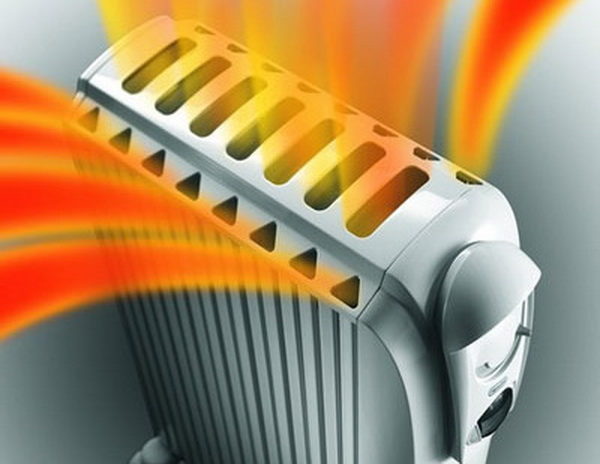
Manufacturers equip radiators thermostatwhich allows you to control and regulate the temperature in the room. Most often in modern models there is a special sensor that allows you to monitor the location of the device and determine the deviation from the horizontal. If you skew or fall, the device will be automatically turned off.
Some models are equipped the timer, thanks to which you yourself can schedule its inclusion at a specified time, for example, in the morning or in the evening. This will save you energy consumption.
Control can be mechanical or electronic. They also have a compartment for storing the power cord when it is not in use, electrical overheating protection and splash protection. Modern models are completed additionally fanthat allows you to speed up the process of heating the air in a cold room.
Due to the fact that such a heater does not have open heating elements, it does not overdry air.
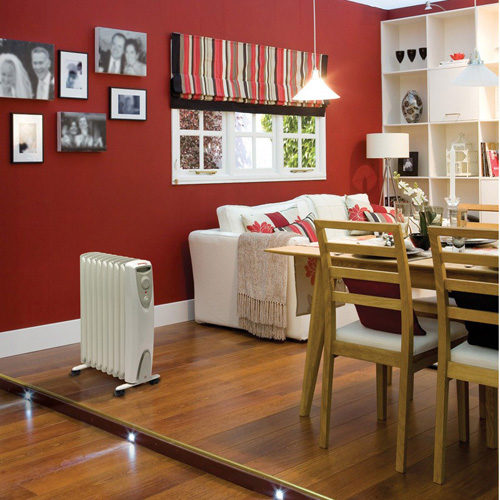
It is believed that the higher the temperature of the radiator, the faster the room warms up. This is partly true, but there are some “but”. Work at high temperatures causes overdrying of air and a decrease in humidity in the room. And the dust which has settled down on strongly heated case, heats up and emits harmful substances. That is why the operation of this heater at lower temperatures is considered more useful and environmentally friendly.
Advantages:
- low price;
- quiet work;
- mobility thanks to wheels and handle;
- automatic temperature maintenance.
The power of different models may vary - it varies from 1 to 2.5 kW. It directly depends on the number of sections (most often there are 5 to 12 pieces). To warm up a room with an area of 25 square meters and a height of approximately 2.5–3 m, it is necessary to have a 2.5 kW model.
The formula for calculating the power is as follows: 1 kW is designed for heating a room with an area of 10 m2.
Convector Heaters
The principle of air heating is convective.The warm air rises, the cold air descends, where it warms up near the front panel, thus the air masses circulate and heat the room (for more details see the articlehow does electric convector work).
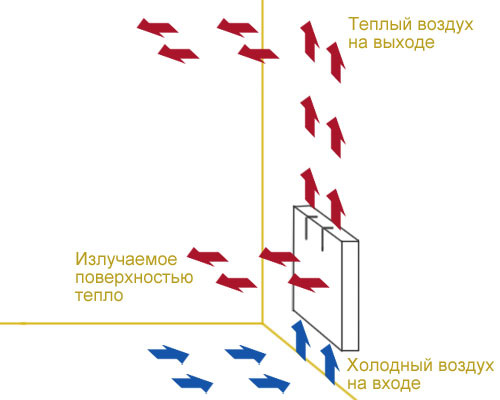
Instruments have a smooth flat surface. The housing itself is a convection chamber with a heating element inside. Cold air enters and is heated by the heating element. Further, it moves through the blinds on the body, while it is replaced by a new portion of cool air from the room. To increase heat transfer and to warm the floors and walls, the slits of the blinds are angled down.
All devices are equipped room thermostat- built-in sensor, which itself determines the temperature in the room and keeps it at a given level. Such devices are very effective and have high efficiency (almost 100%).
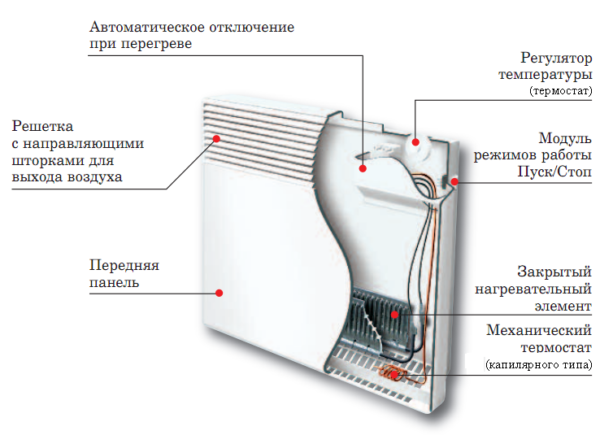
Installation method
Important difference convector from the oil heater - installation method.Oil-fired radiators are floor standing, but convection often hangs on the wall. There are, of course, mobile designs with wheels, as well as devices in the form high skirting.
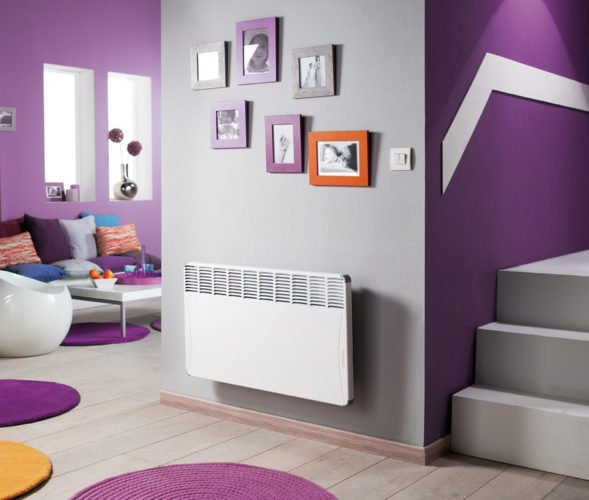
Since the heating element does not directly contact with the case (there are rests made of heat-resistant material between them), the convector heater is considered fireproof device, and therefore additional grounding is not required.
Benefits and features
- This heat source is fireproof and meets all the requirements of the European standard.
- The electric convector is very effective, its design allows you to evenly distribute warm air in rooms for various purposes. By combining several devices into a single network, you can create a so-called modular heating system and use it not only in apartments and offices, but also in country houses where there is no main heating. Such a heating scheme may well replace an expensive boiler.
- Thermostat and the presence of several modes of operation allow economical use of electricity.
- Stylish design - well fit into any interior.
- Silent work.
Final comparison of the main characteristics
- Profitability of work. The convection heat source uses energy more economically, the oil electric battery consumes 25-30% more.
- Warm-up speed. The unit with oil is heated in several stages: electricity heats the heating element, from it heats up the oil, which transfers heat to the case itself, from which heat is emitted into the room. The phased warming up takes a lot of time - the device is already in working condition it consumes electricity, and the room is still cool. To minimize this drawback and speed up the heating process, radiators are equipped with a built-in fan.
- Convenience of operation. The weight of the oil cooler is quite large (about 20 kg), although it is mobile thanks to the wheels and the handle. Convector also has a small weight and the possibility of additional mounting on the wall.
- Security. Heated to high temperatures oil can be dangerous to humans, even if the radiator is equipped with splash protection. And the metal, heated to very high rates, can cause burns. It is better not to leave such a heater unattended - not all of them are equipped with overheating protection. The body of the convector is heated to only 60 degrees and does not pose any danger. In the event of an emergency, the device will automate and disable it.
- Duration of operation. All appliances that work on oil, over time, give a leak, as a result of which the oil evaporates first and then fails. The duration of the work of convection batteries, declared by the manufacturer, is 5 years, but in fact they last longer - up to 15 years.
- Environmental friendliness. The indicator of environmental friendliness of the device is the absence of the combustion process of oxygen and dust. Both of them, and another source of heat, as a result of convection, raise dust into the air, however, it will not burn in convectors due to low body temperatures, which is not the case with the oil type. As for the combustion of oxygen, this process is excluded in both cases.
- Pricebut. In this category, the oil battery is a clear winner, as it costs much less than a convection one. But if we talk about the price-quality ratio, then, of course, convector models win here.
And yet, which heater is better - convector or oil?
Oil heater or convector - each has its advantages and disadvantages. Offers on the market and sales in recent years show that convection devices are rapidly replacing other types of heaters, because they are economical, convenient and safe.And if we compare the radiators working on oil and electric convectors, then the latter, of course, among the leaders.

/rating_off.png)












